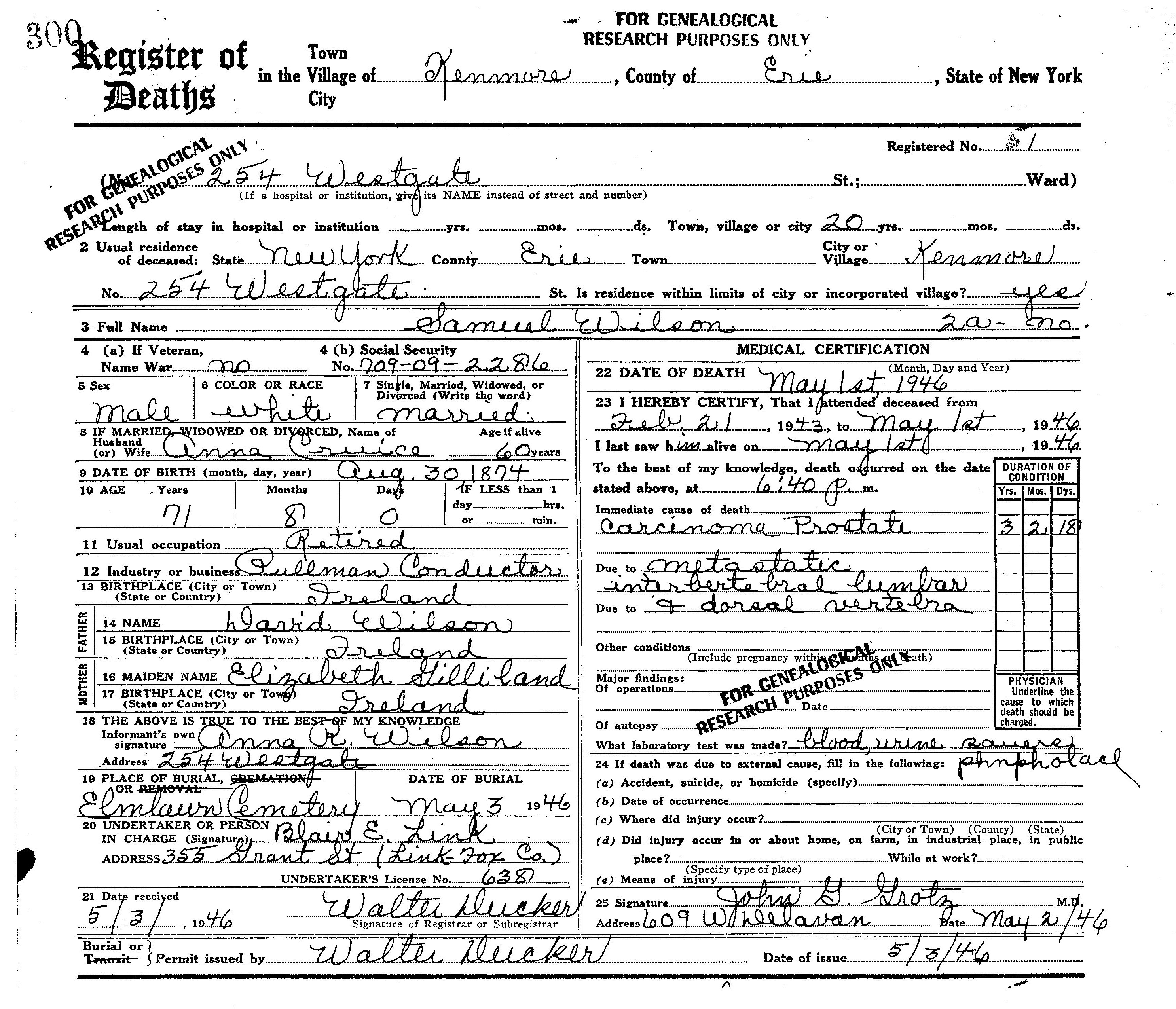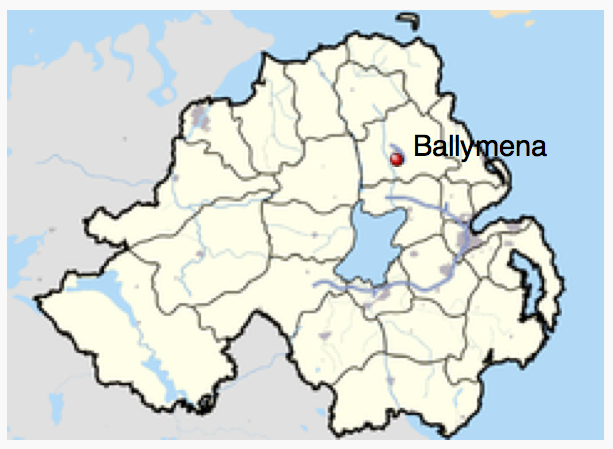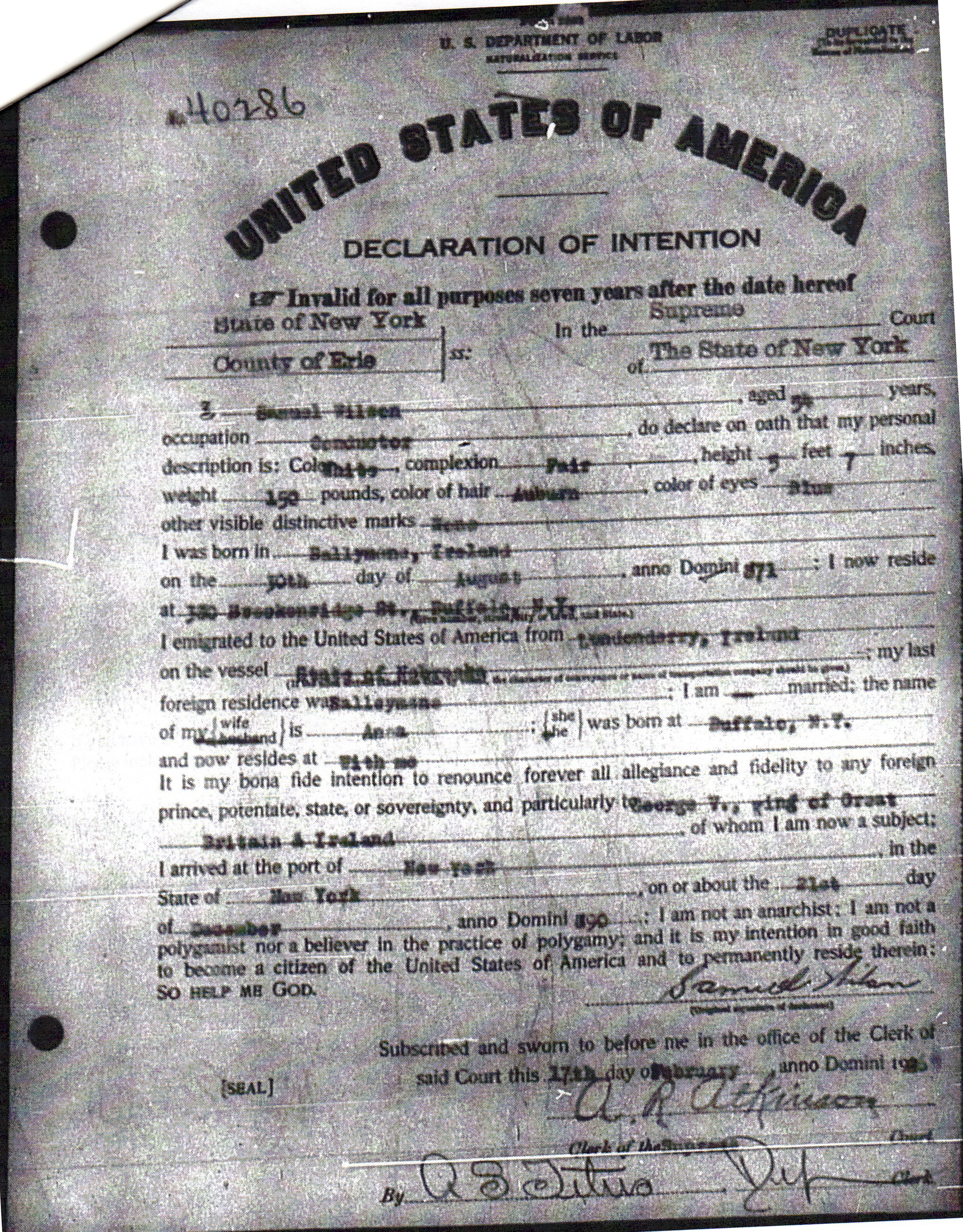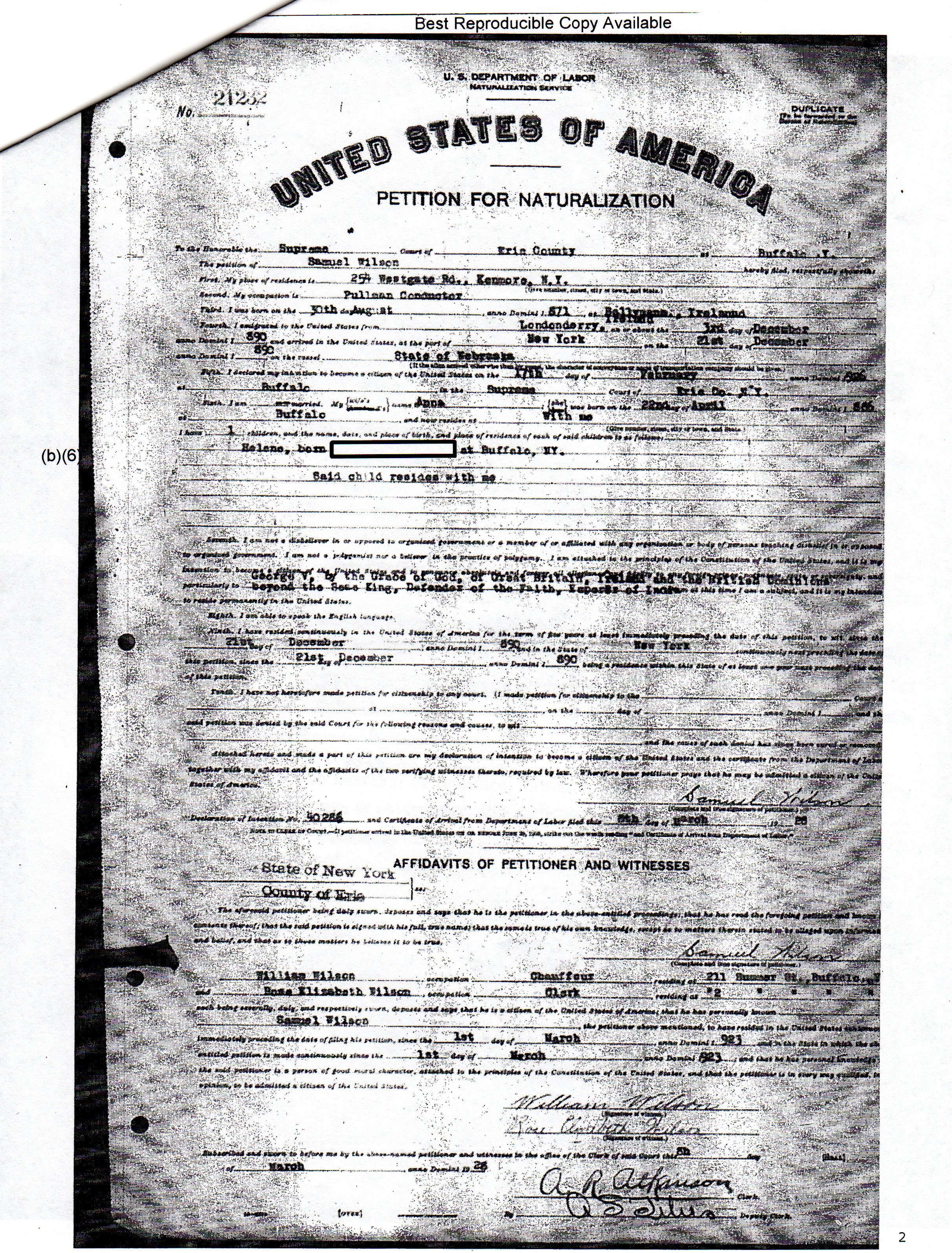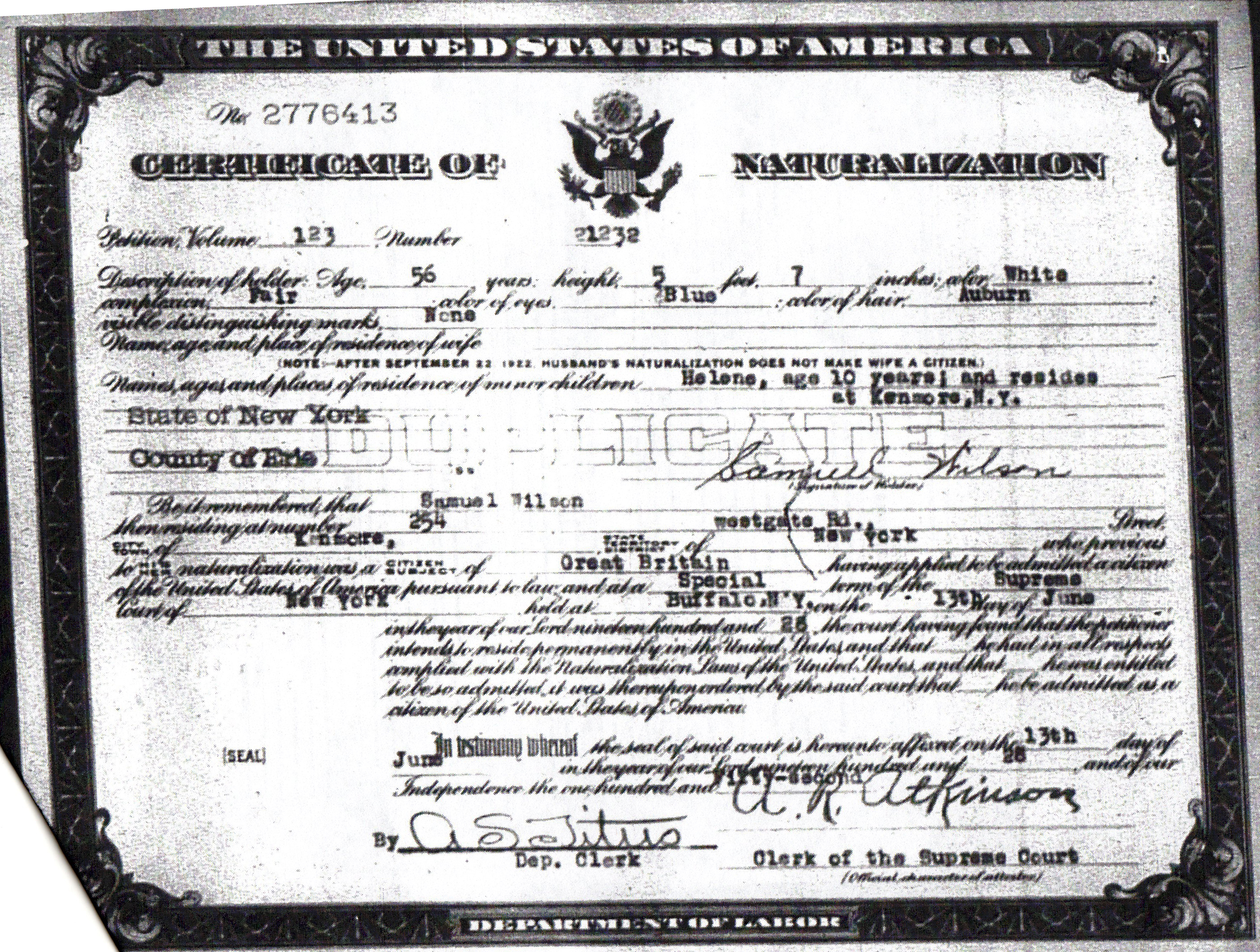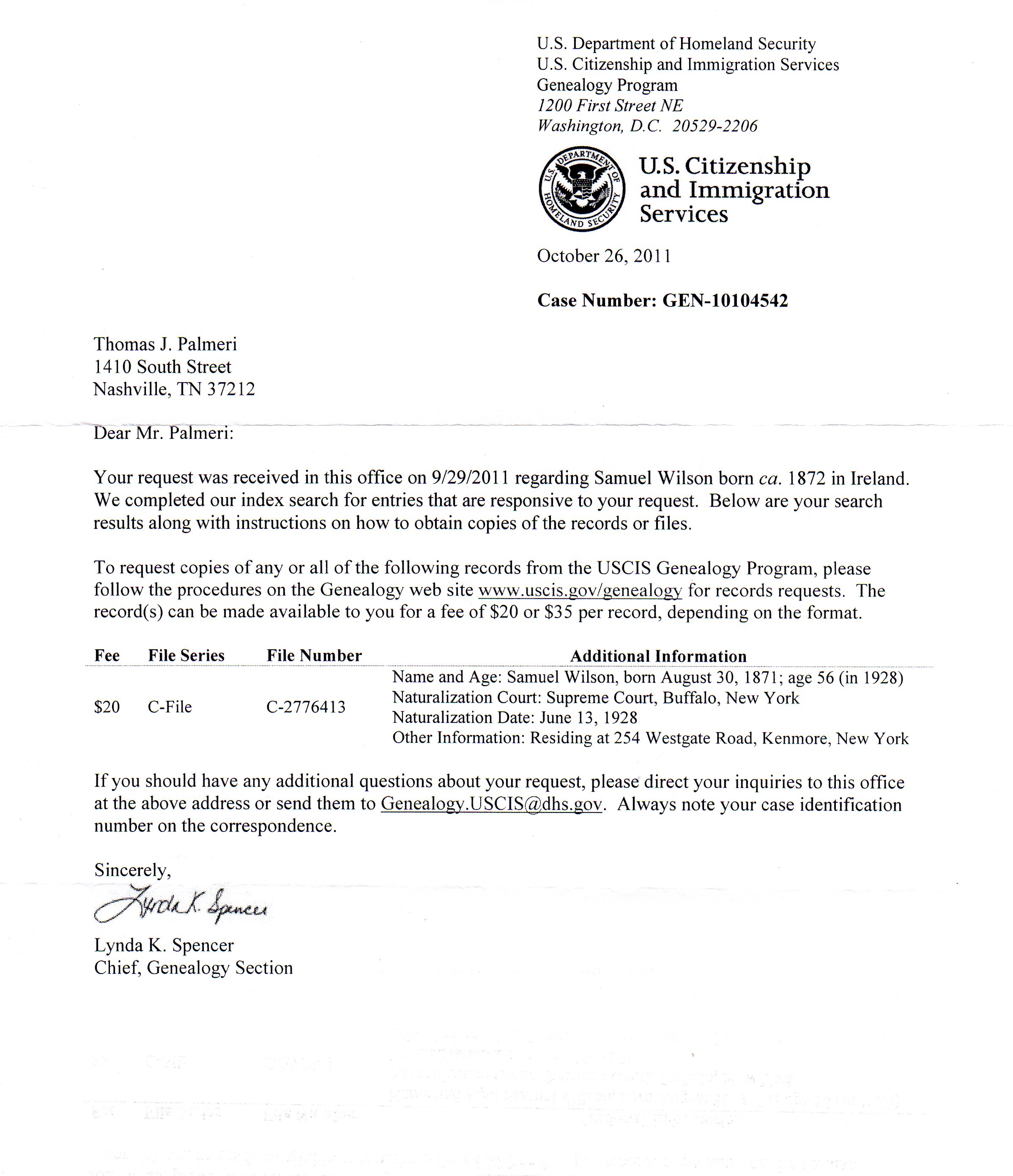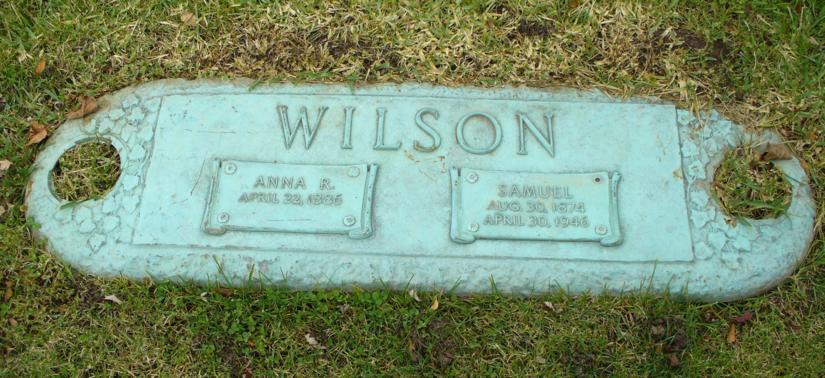Samuel Wilson, born 30 Aug 1871 and died 30 Apr 1946, and Anna E. Regina Cruice, born 22 Apr 1886 and died 21 Jun 1976, were married 30 Apr 1910 in Niagara Fall. Their one child was my grandmother, Helene Anna Wilson.
Because I found my great-grandfather's death certificate in Kenmore, I learned that his mother's name was Elizabeth Gilliland. I knew her name was Elizabeth, but some other record said that her last name was Watts, and other records just listed it as Elizabeth.
I did a search on "Samuel WIlson" with parents "David Wilson" and "Elizabeth Gillibrand" on familysearch.org and found a good bit of information:
A record for the birth of Samuel Wilson, which lists his birthday as 30 Aug 1870 instead of 30 Aug 1871. It lists his birthplace as Connor, County Antrim, Ireland. Ireland Births and Baptisms, 1620-1881, film number 101210
When I googled this, I learned that the village of Connor is currently encompassed by the village of Kells, just to the southeast of Ballymena in what is now Northern Ireland. Before I had Ballymena as his birth place. This narrows it to the particular location in the Borough. According to Wikipedia, "Kells (from the Irish: Na Cealla) is a village in County Antrim, Northern Ireland, near Ballymena. The area encompasses Kells and the village of Connor which are very close together and have a joint primary school, library, development association etc. It had a population of 1,745 people in the 2001 Census. It is within the Borough of Ballymena. An old stone bridge crosses the Kells Water, separating Kells from the adjacent village of Connor."
I also found my great-grandfather's siblings:
William Wilson, born 9 May 1866, christened 10 May 1866, in Conner, County Antrim, Ireland. Ireland Births and Baptisms, 1620-1881, film number 101125
David Wilson, born 17 May 1873 in Conner, County Antrim, Ireland. Ireland Births and Baptisms, 1620-1881, film number 255874
Ann Wilson, born 1 Dec 1876 in Conner, County Antrim, Ireland. Ireland Births and Baptisms, 1620-1881, film number 255962
James Wilson, born 4 May 1865 in 0138, Broughshane, County Antrim, Ireland. Ireland Births and Baptisms, 1620-1881, film number 101100. According to Wikipedia, "Broughshane (formerly Bruaghshane, from Irish: Bruach Sheáin) is a village within the Borough of Ballymena in County Antrim, Northern Ireland. It is 3.5 miles (5.6 km) northeast of Ballymena and 13.8 miles (22.2 km) north of Antrim, on the A42 road. It had a population of 2,364 at the 2001 Census."
One of the records noted that David Wilson, my great-great-grandfather, was born in Ballynashee, County Sligo, Ireland. Ireland Births and Baptisms, 1620-1881, film number 255962, for daughter Ann Wilson
David Wilson and Elizabeth Gilliland were married 29 Jan 1864. David Wilson's father's name was James Wilson. Elizabeth Gilliand's father's name was William Gilliland. Ireland Marriages, 1619-1898, film number 101452
